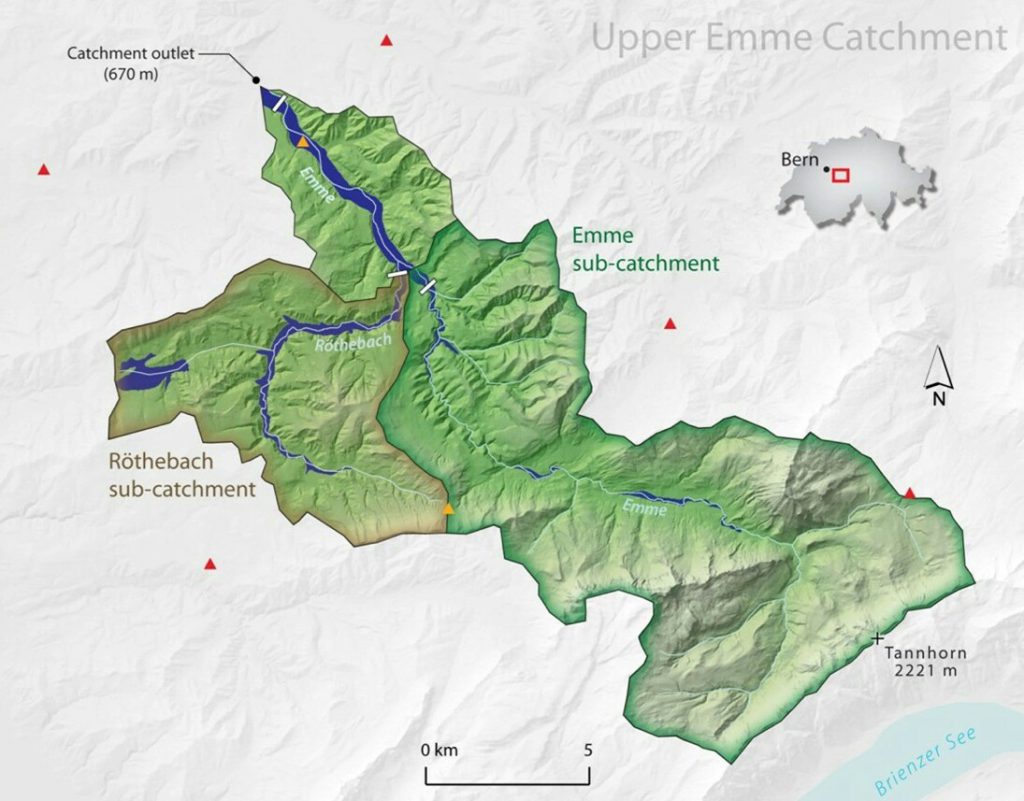
Research Fellow: Álvaro Pardo-Álvarez
hosted by University of Neuchâtel, Switzerland
Supervisors
Prof. Dr. Philip Brunner – UNINE
Prof. Dr. Daniel Hunkeler – UNINE
Prof. Dr. Jan Fleckenstein – UFZ
Secondments
UFZ Leipzig – 5 months
Geotechnik Heiligenstadt – 1 month
Research Objectives
- Explore realistic boundary conditions for CFD modelling.
- Integrate innovative field observations (tracer and UAV data) in this modelling process
- Employ tracer methods to cover characteristic times relevant to the hyporheic zone and the river corridor
- Use the highly advanced modelling framework to explore the superposition of different spatial and temporal scales for both synthetic and field based environments
Project description

Despite their critical importance for stream ecology, biogeochemistry and water quality, the interactions and feedback mechanisms across the different spatial and temporal scales of the hyporheic zone and the river corridor remain poorly understood. Although numerous modelling studies on hyporheic exchange have advanced our understanding of general mechanisms, they are often focused on local-scale processes with highly simplified boundary conditions. This may lead to a misrepresentation of the hyporheic exchanges and biogeochemical turnover capacity in river corridors.
To close this conceptual gap, we aim to provide and integrate field and modelling approaches to quantify exchange fluxes and processes between the hyporheic and stream system across different spatial and temporal scales for a highly instrumented field site in Switzerland (see Figure 1). In order to achieve this objective, the surface flow model OpenFOAM will be initially used to obtain local hydraulic heads at the riverbed.
Results of streambed pressure will be then used to drive a subsurface flow and reactive transport model (local coupling) to simulate both exchange flow and biogeochemical turnover in the hyporheic sediments. Transient reach-scale boundary conditions for the latter hyporheic model will be directly obtained from the integrated surface-subsurface hydrological model HydroGeoSphere. These models will be based on a high-resolution characterization of the streambed acquired with a state-of-the-art LIDAR-UAV and will integrate new and innovative tracer-based methods taking advantage of very recent developments in sensor technology, such as the portable mass spectrometer (MiniRuedi) developed by Brennwald et al. [2016], in addition to hydraulic – and also UAV- field data.
Using this approach, we expect that simulation results will provide a more realistic representation of hyporheic flows and the dynamics feedbacks between the stream channel, hyporheic zone and the underlying aquifer than by using steady hydraulic boundaries.
Tasks & Methodology
Tasks: (1) To master the different hydrological models use to simulate the hyporheic zone-river corridor interactions; (2) training on inverse methods, including highly parametrized inversion, and remote sensing with UAV’s; (3) field training.
Methodology: (1) model set-up; (2) field sampling (3) observed data analysis and integration into models; (4) model calibration; (5) model coupling; (6) scientific paper and thesis writing.
Data & Datasets
Data is accessible on the H+ database.
Dissemination & Communications
4th Cargèse Summer School, 2018 (poster) : Closing the conceptual gap between the hyporheic zone and the river corridor
Glossary
Hyporheic zone: region beneath the streambed and part of the aquifer whose biochemical properties are different from both the surface and the subsurface domain. These peculiar properties of the hyporheic environment depend on the exchange of water between the stream and the aquifer.
Portable mass spectrometer: autonomous device for on-site dissolved gas relative concentrations analysis.
UAV: Unmanned aerial vehicle, commonly known as a drone. Miniaturized sensors will be mounted on them to map streambed bathymetry as well as measure some other hydrological data.
